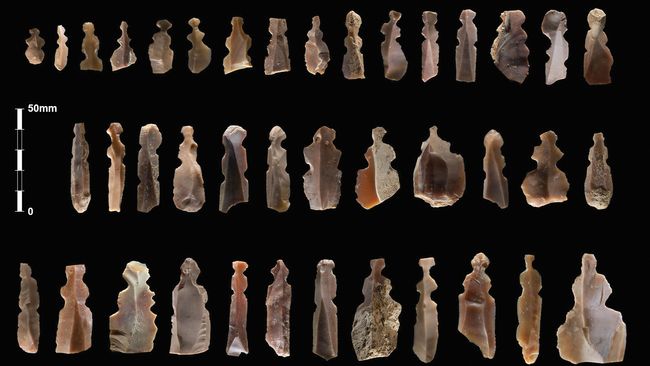Lumpy flint figurines may be some of the earliest depictions of real people [View all]
By Tom Metcalfe - Live Science Contributor 9 hours ago

Archaeologists now think the Neolithic flint artifacts found at Kharaysin in Jordan are the earliest-known portrayals of real human beings in the Near East.
(Image: © Ibáñez et al/Kharaysin archaeological team/Antiquity Publications Ltd)
Archaeologists at an ancient burial site in Jordan thought one of their team might have sunstroke when he suggested some rough flints he'd found could represent people. But now his discovery could change how scientists think about the Neolithic Near East.
More than 100 of the unusual flint artifacts dating back to about 7500 B.C. have been discovered at Kharaysin, an archaeological site a few miles northeast of Amman in Jordan.
The archaeologists who found them now think the artifacts may be early depictions of real people and may have been used for ancestor worship. They also think the figurines could shed light on why portrayals of humans became widespread in the Near East from about 1,000 years earlier. However, experts contacted by Live Science were not entirely convinced that the lumpy stone artifacts were used in ancestor worship rituals, though they don't think it's out of the question.
After one of the team digging at Kharaysin unearthed several of the flint artifacts, each about 2 inches (5 centimeters) long, he proposed they showed rough human figures — with a projecting head flanked by two notches on each side that could represent the tops of shoulders and hips.
More:
https://www.livescience.com/grave-figurines-early-human-portrayal.html
